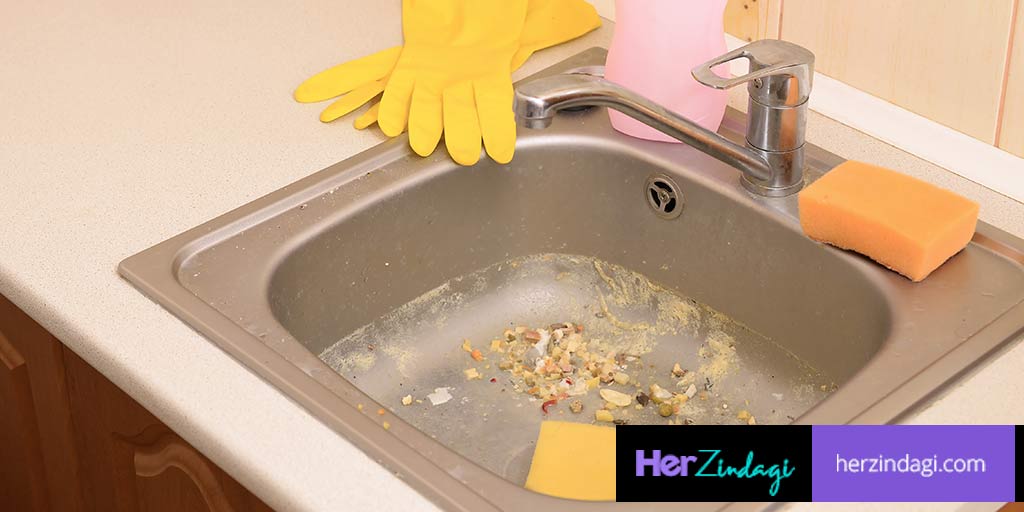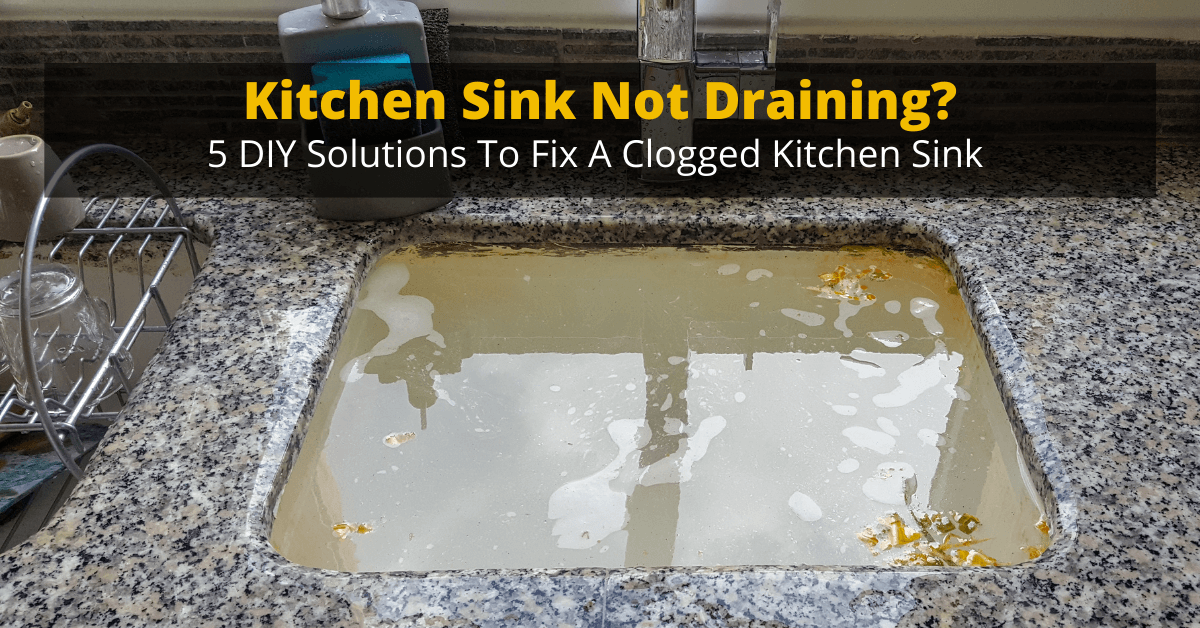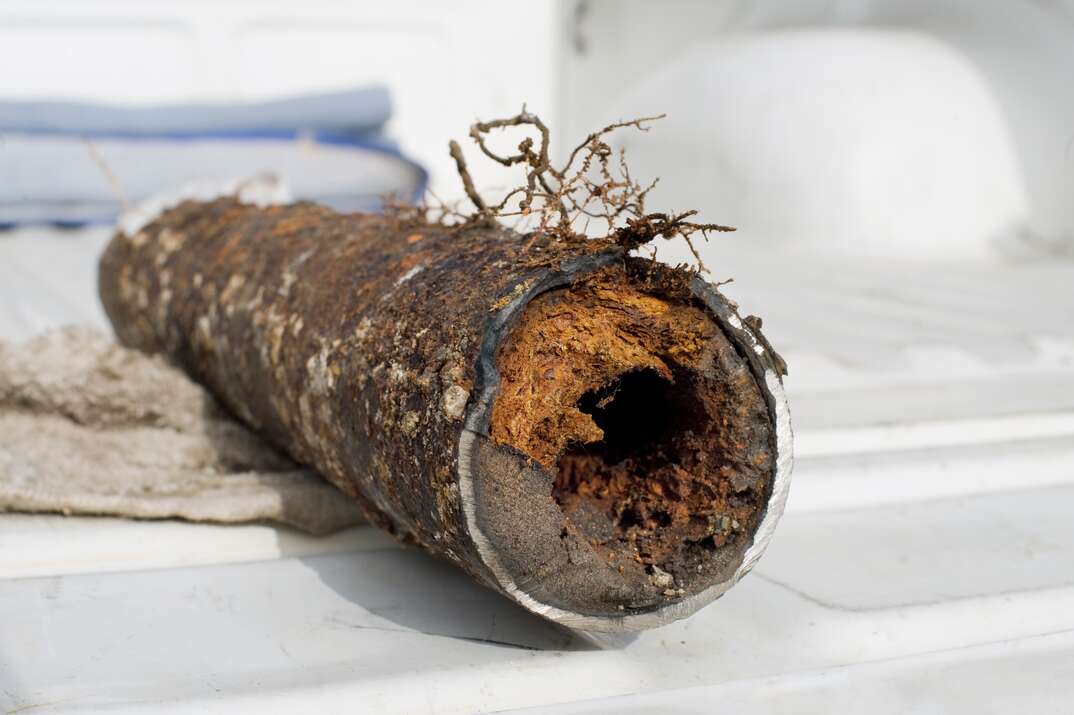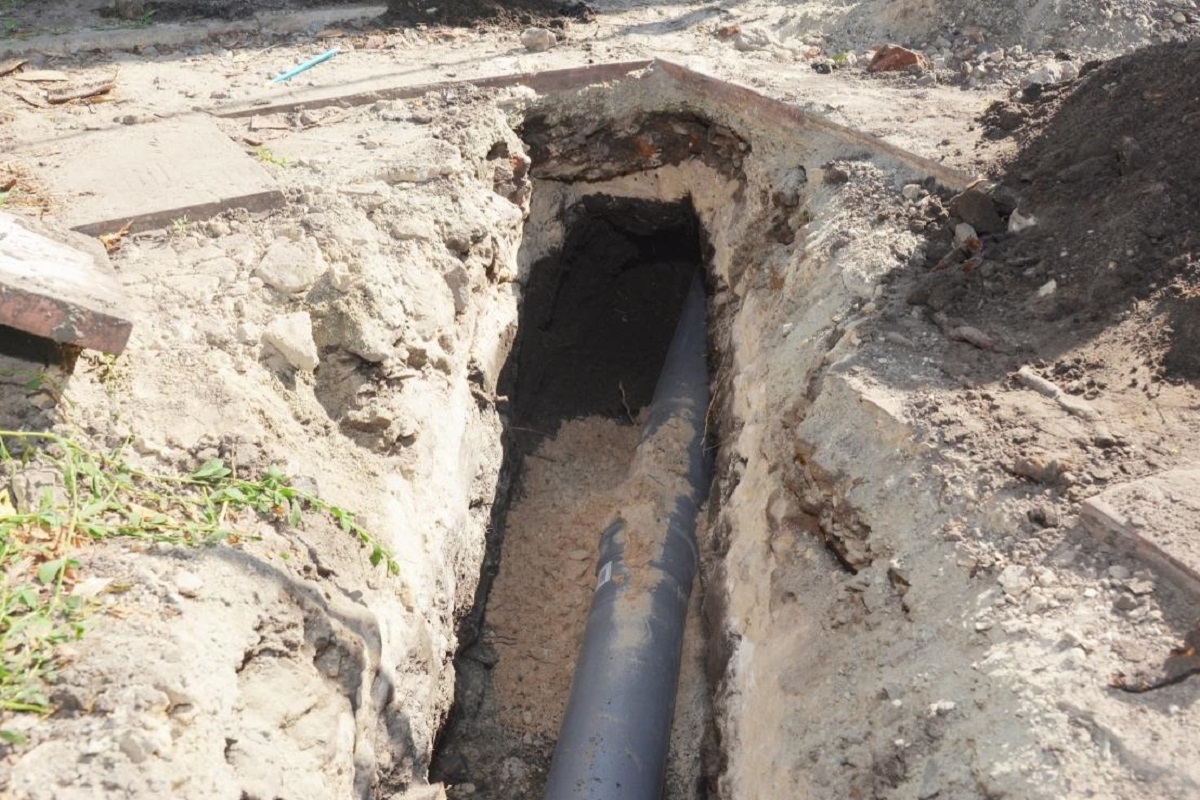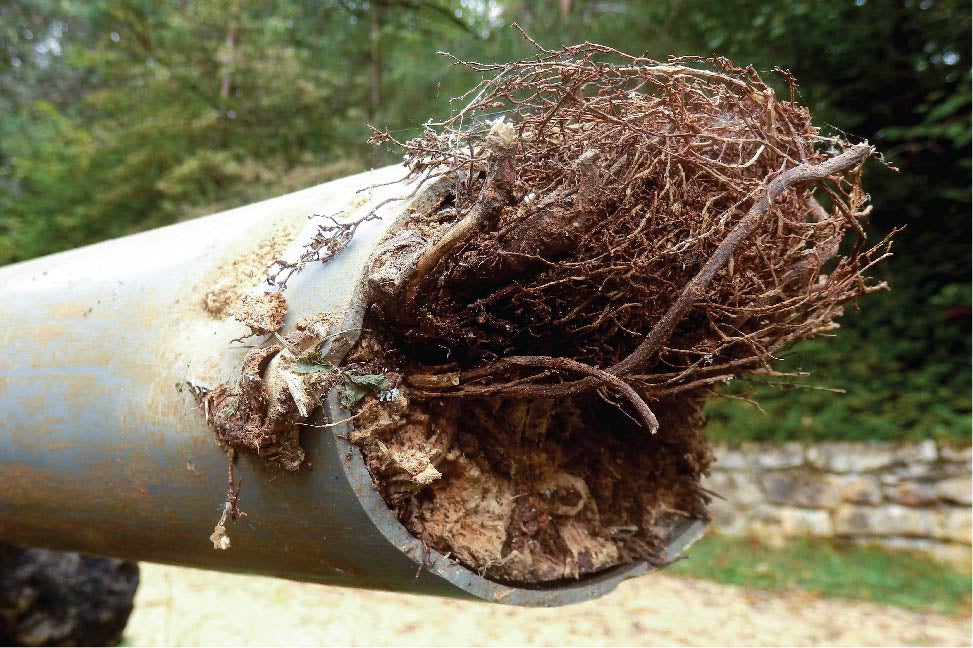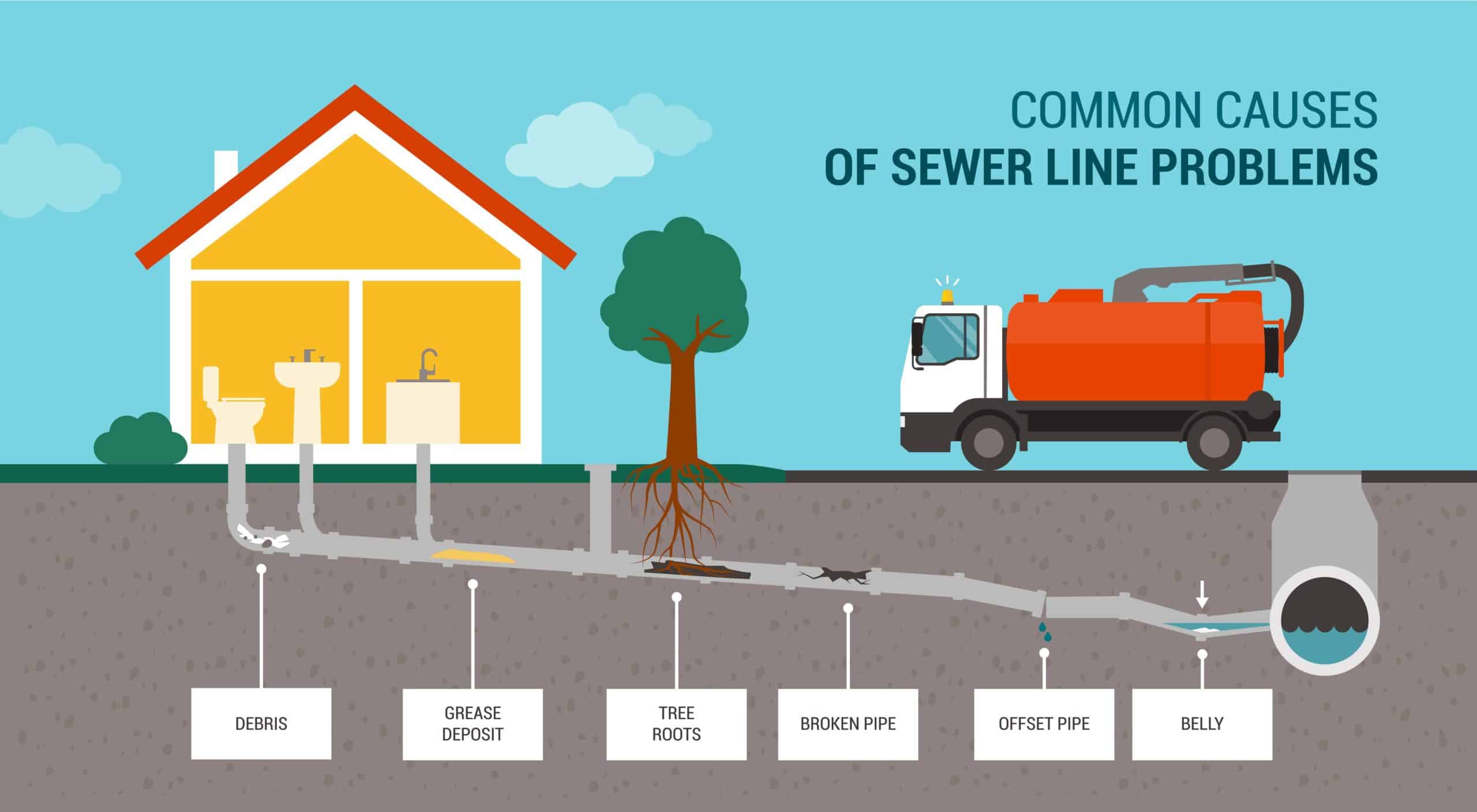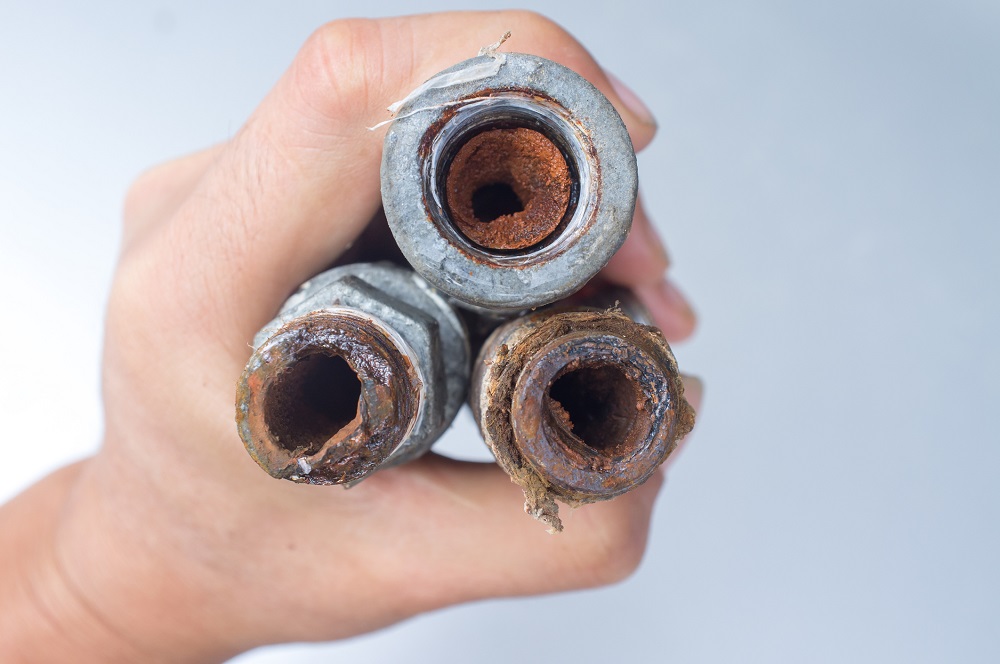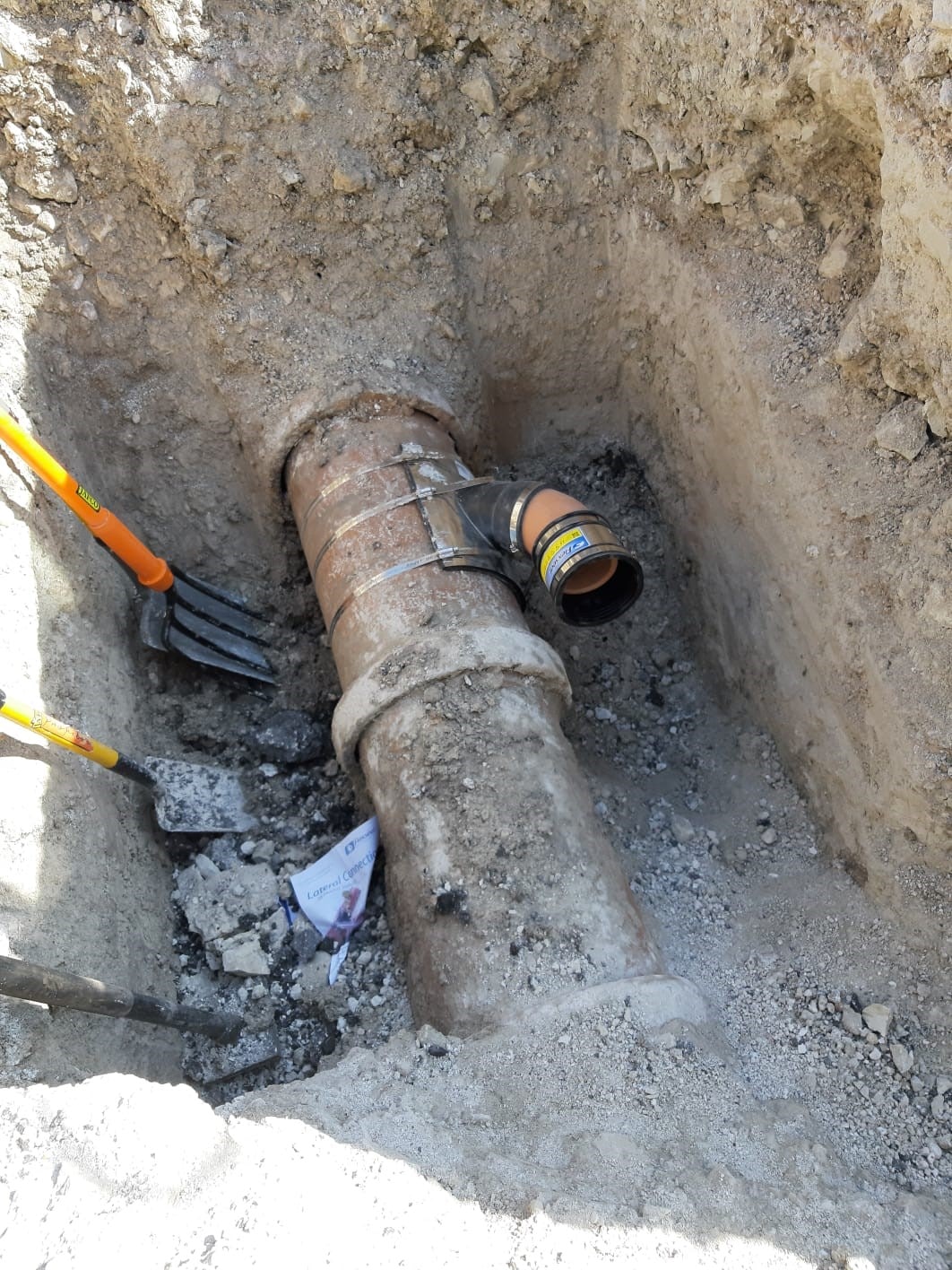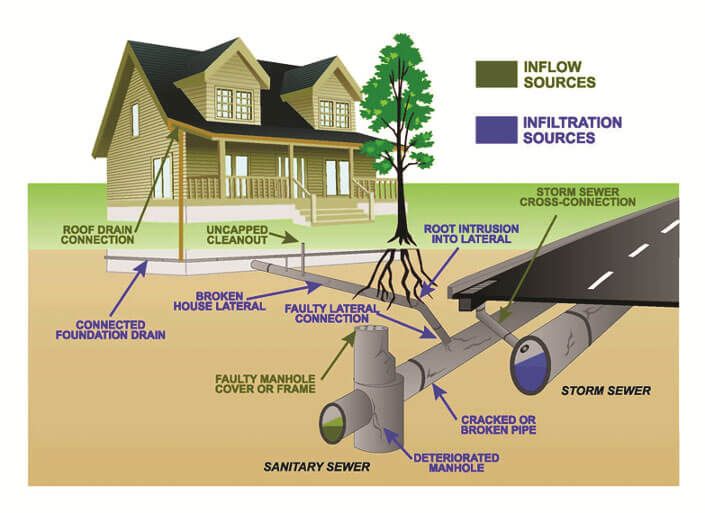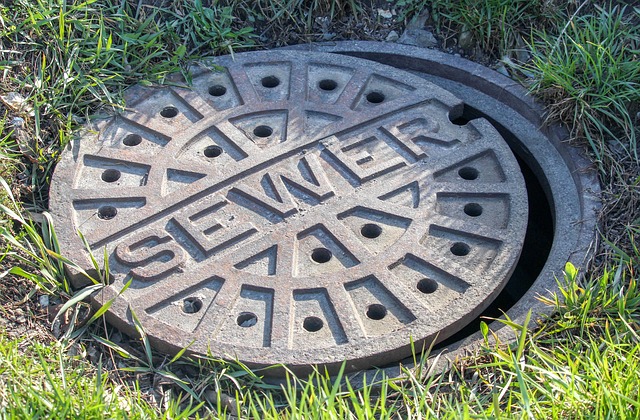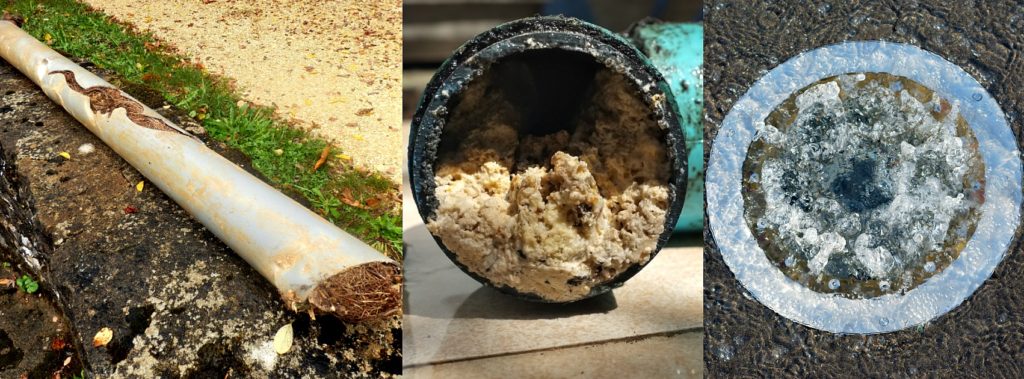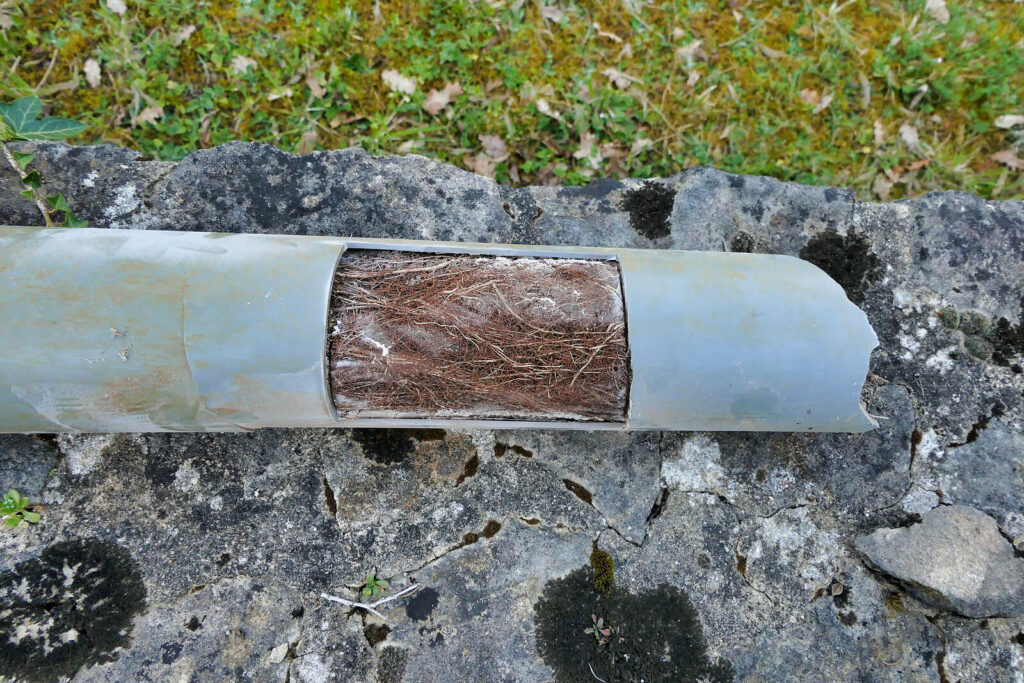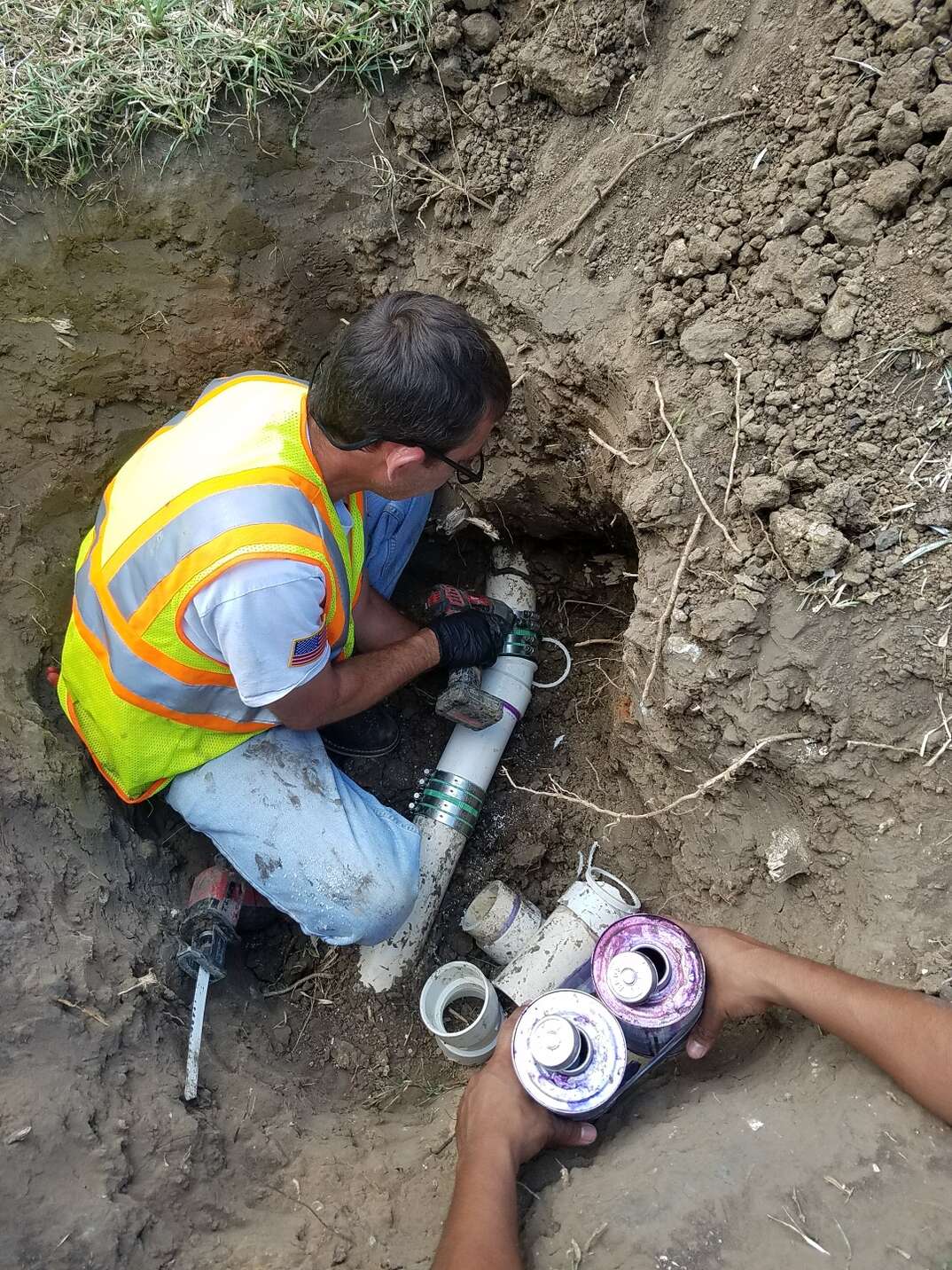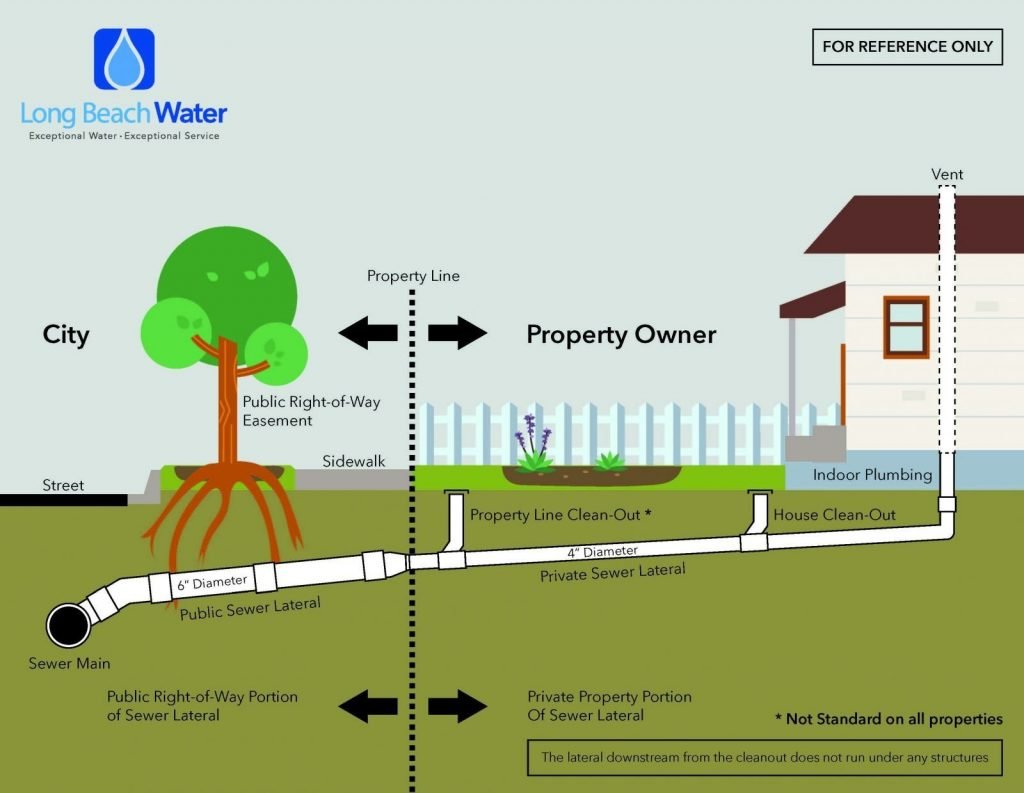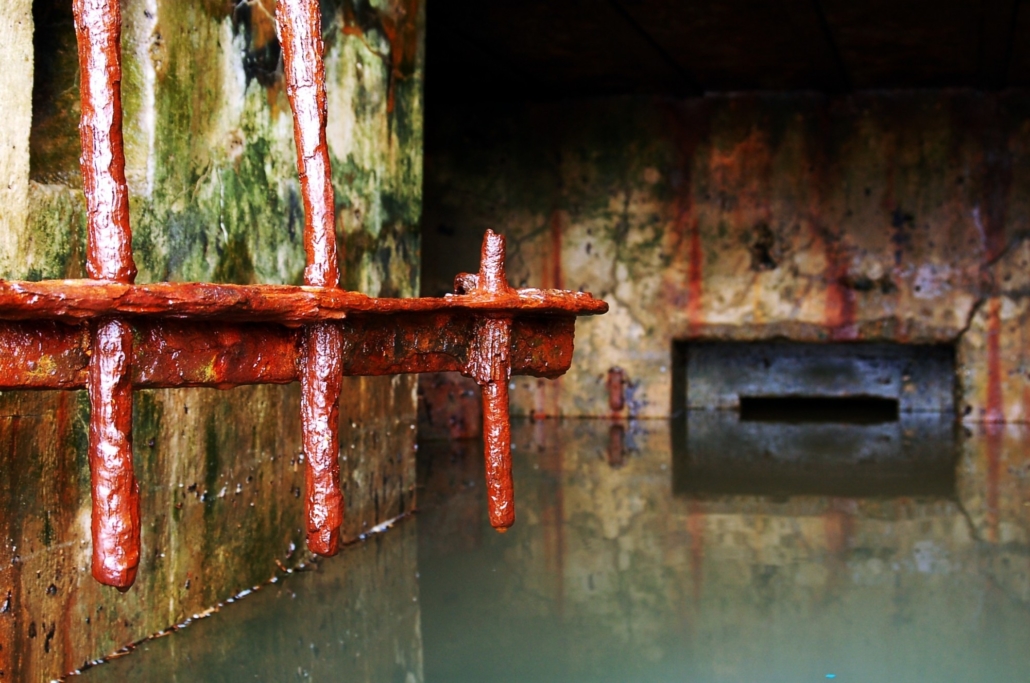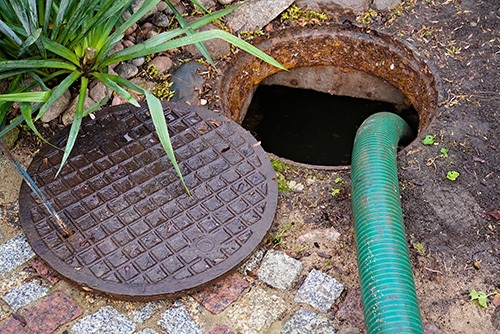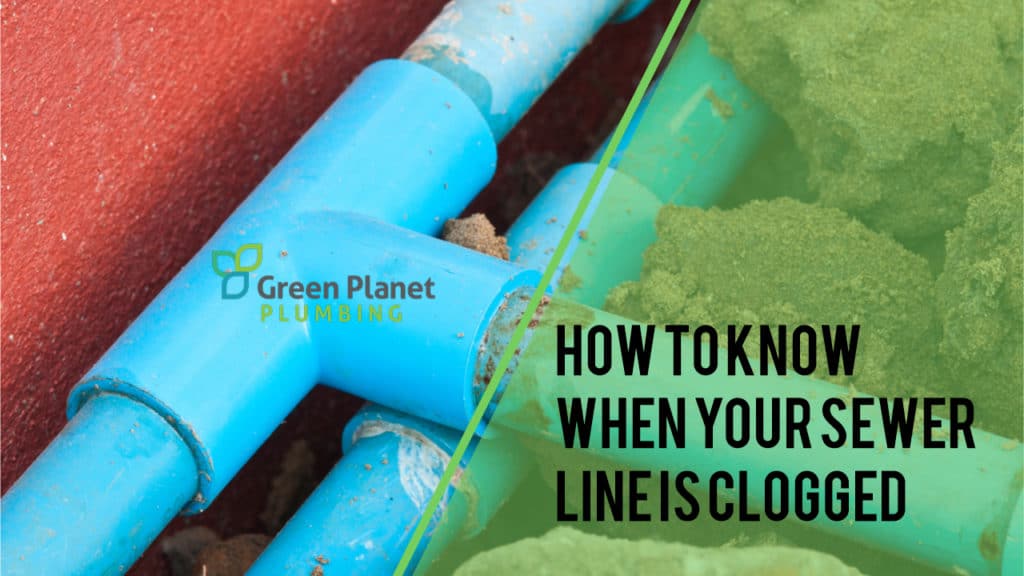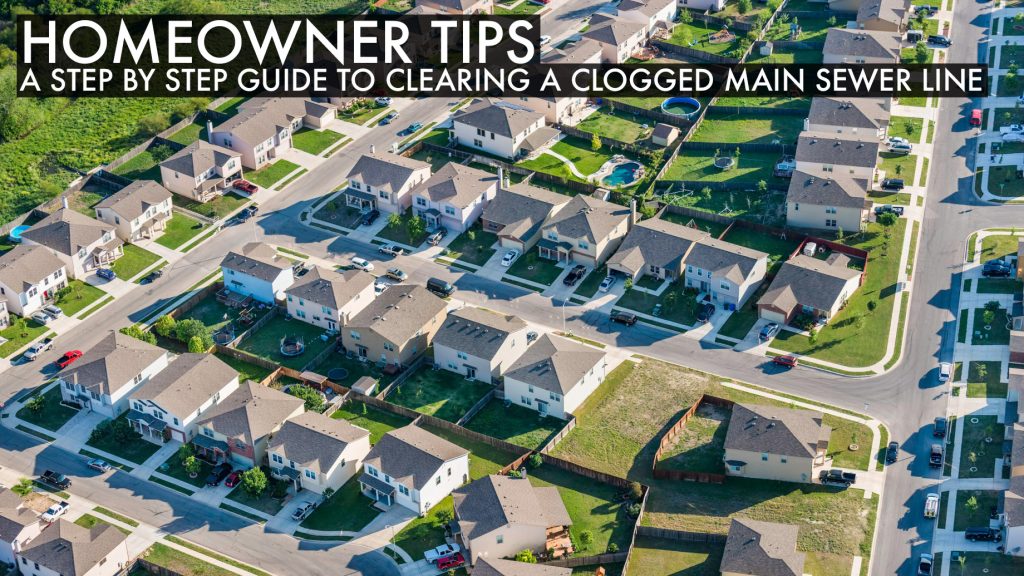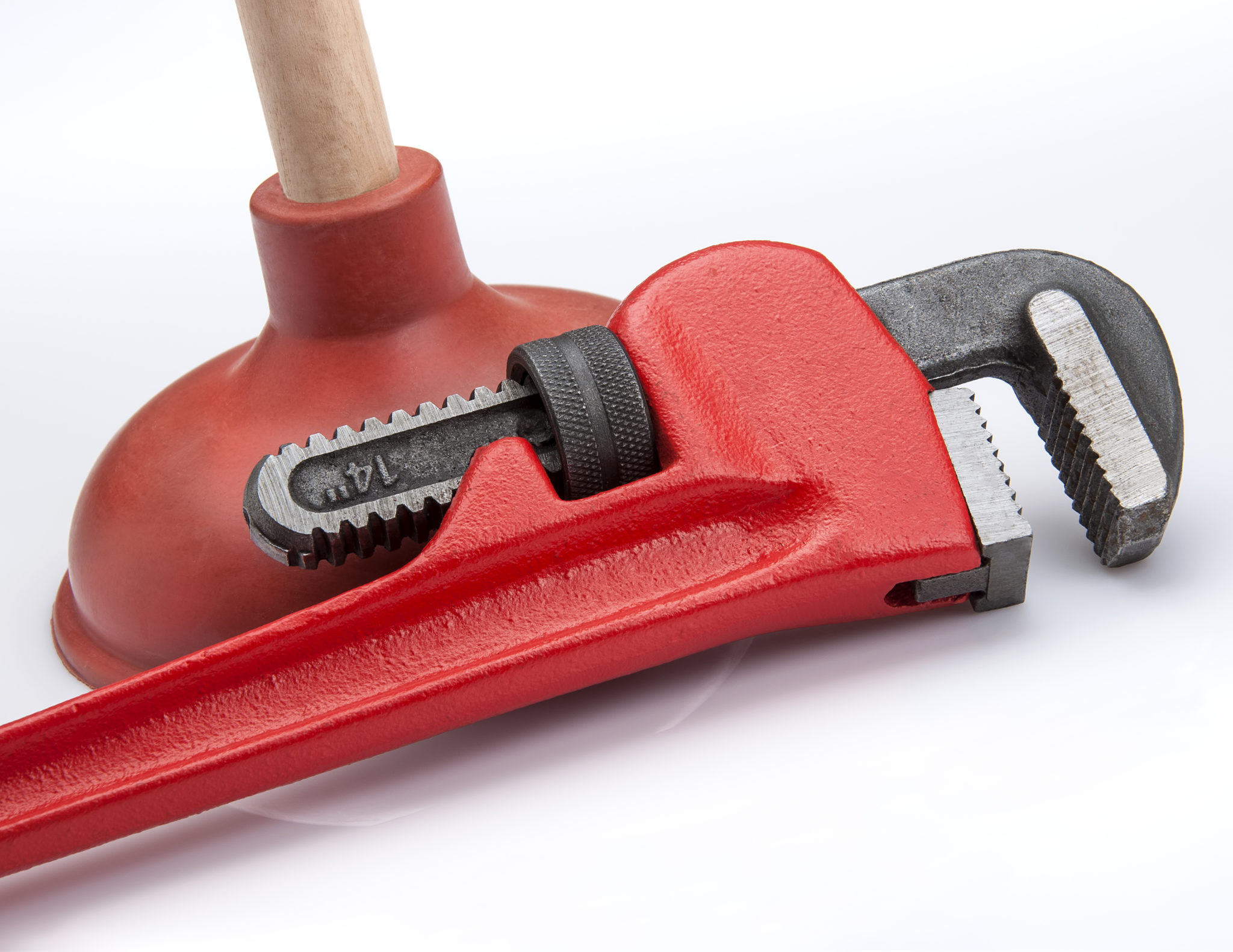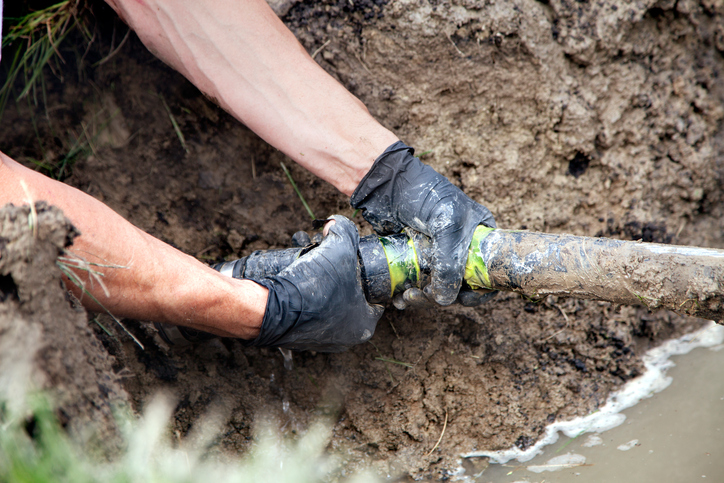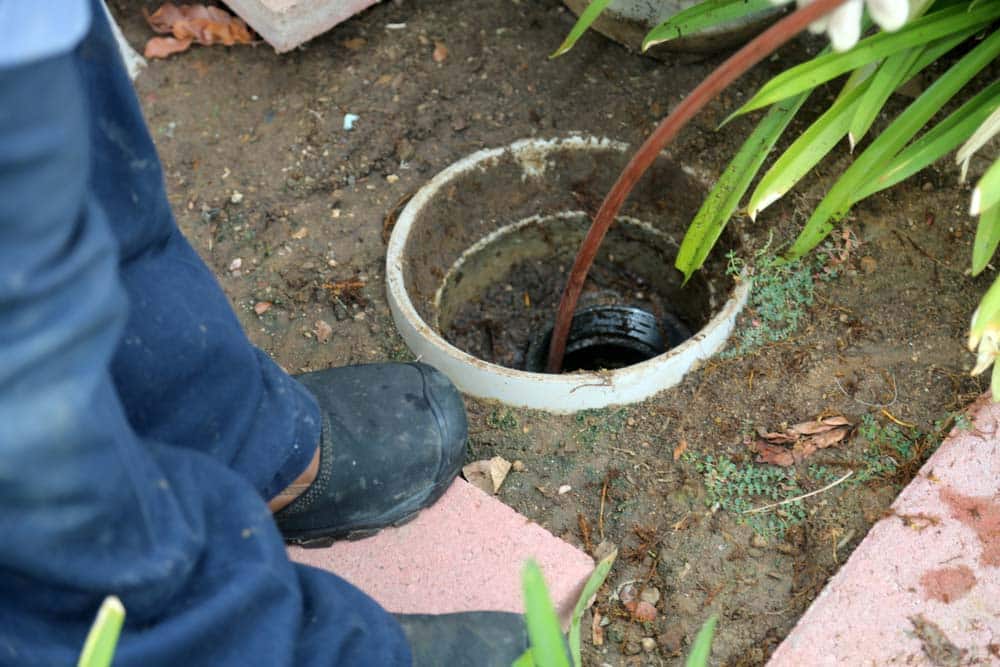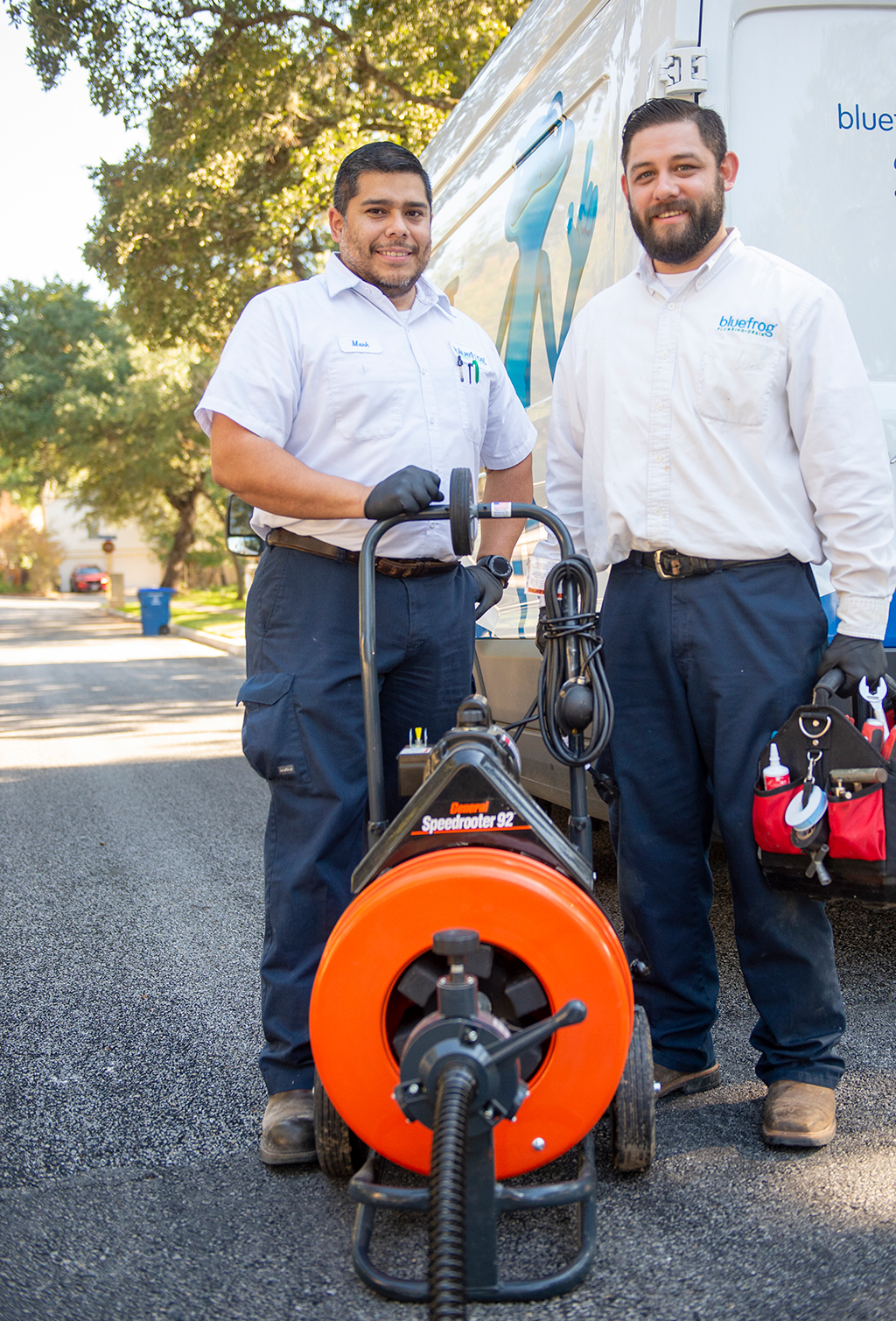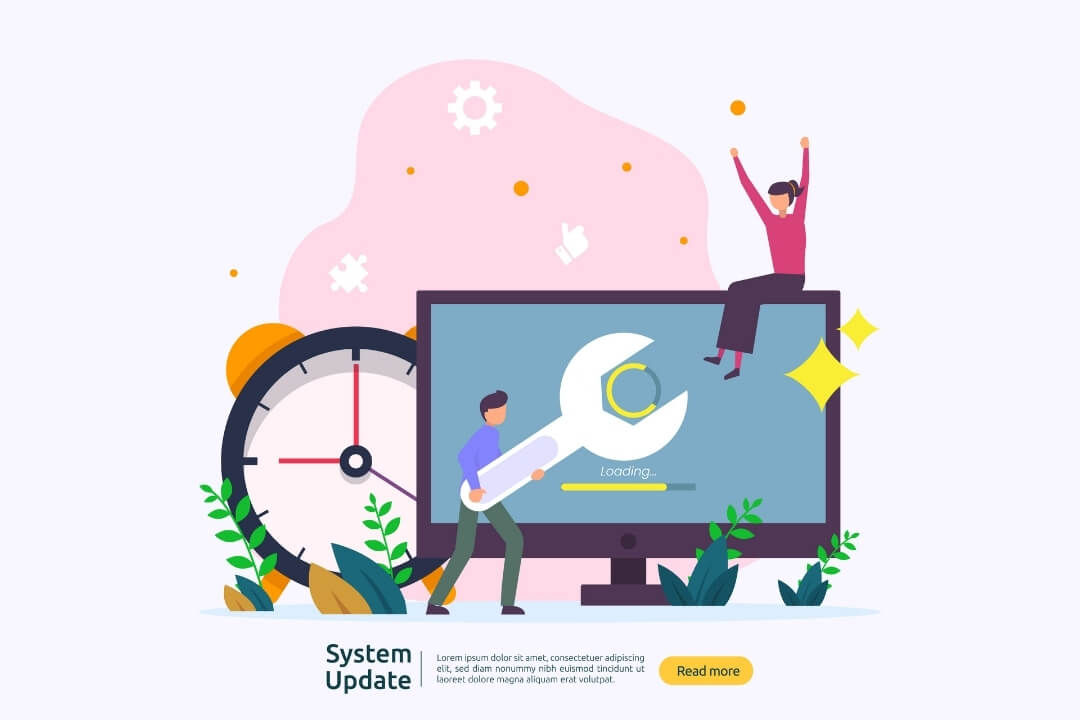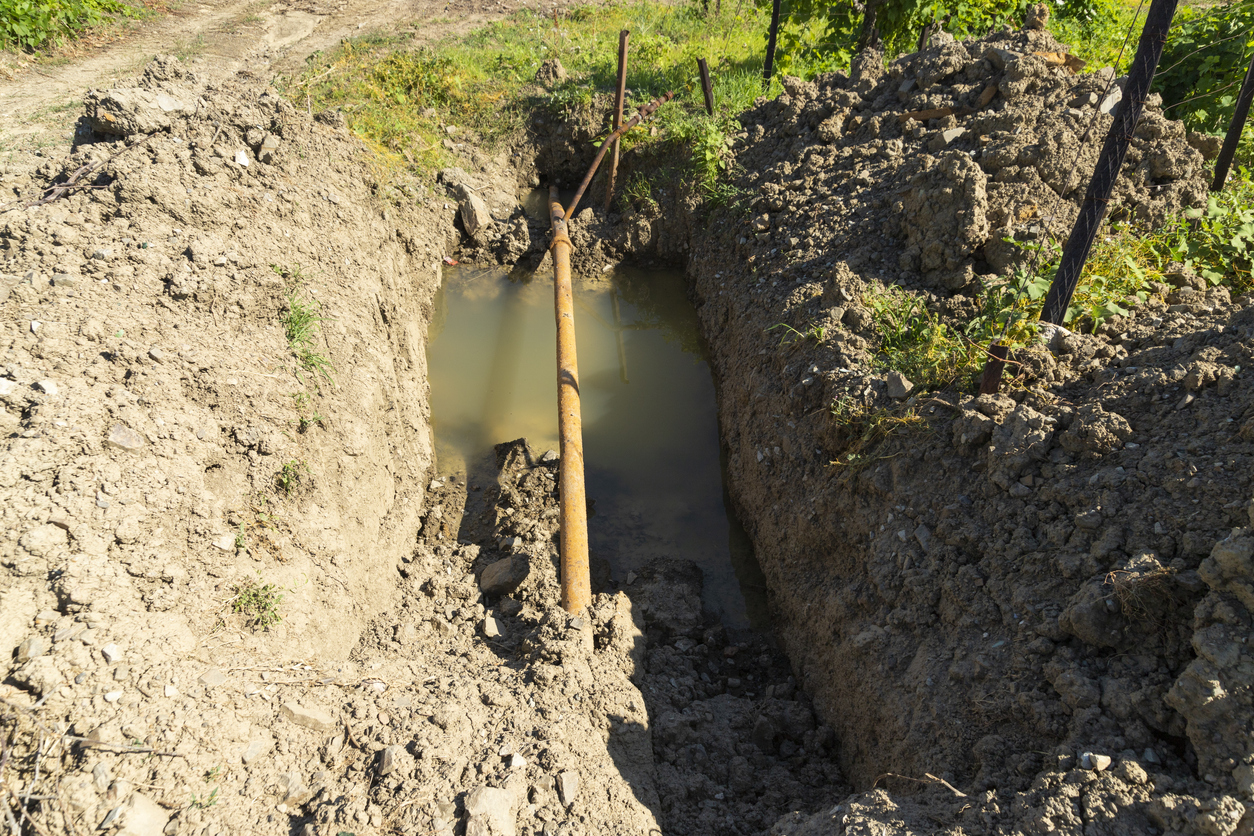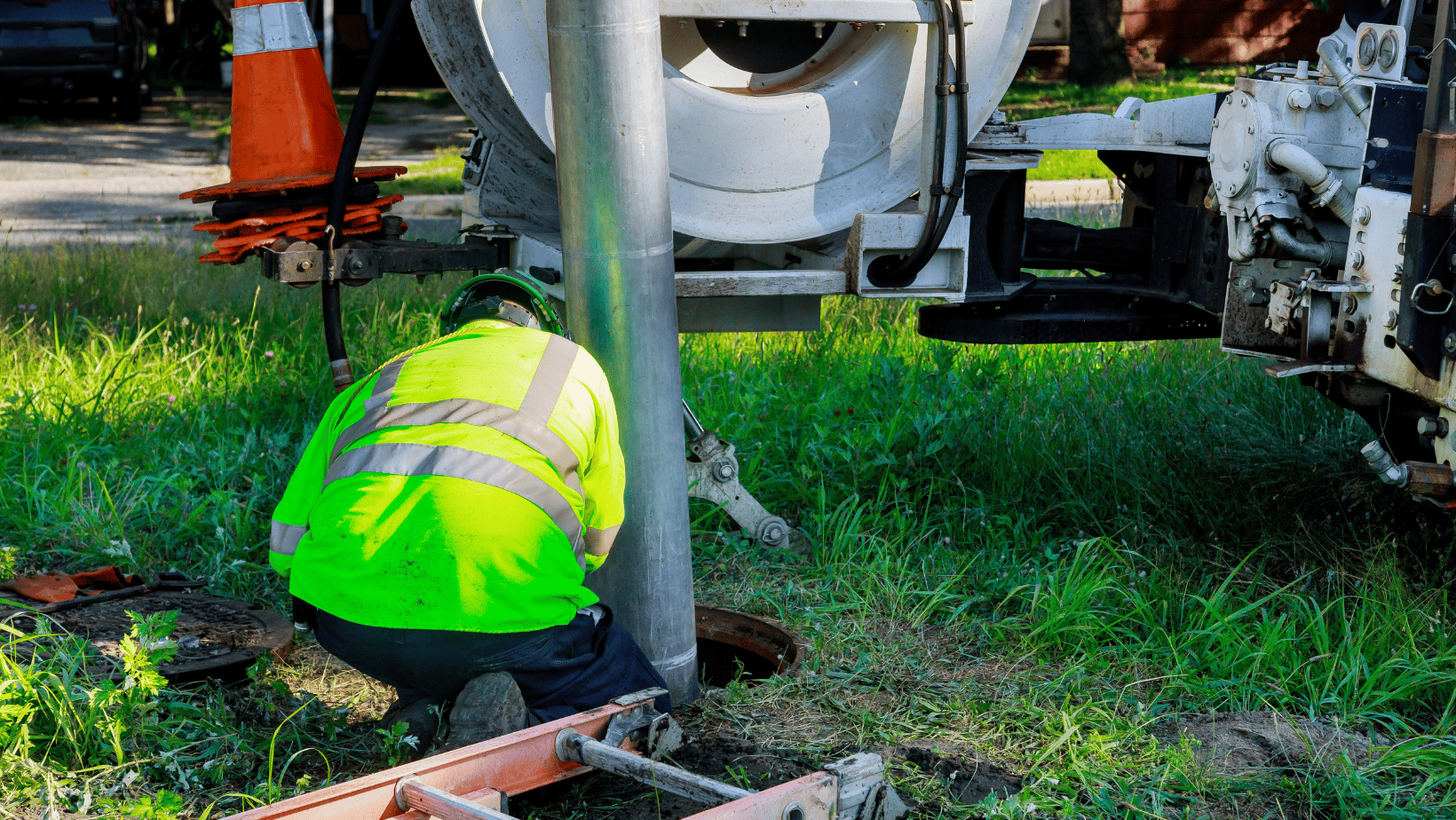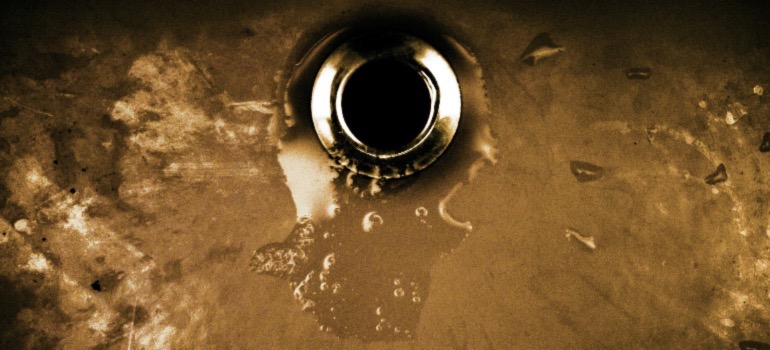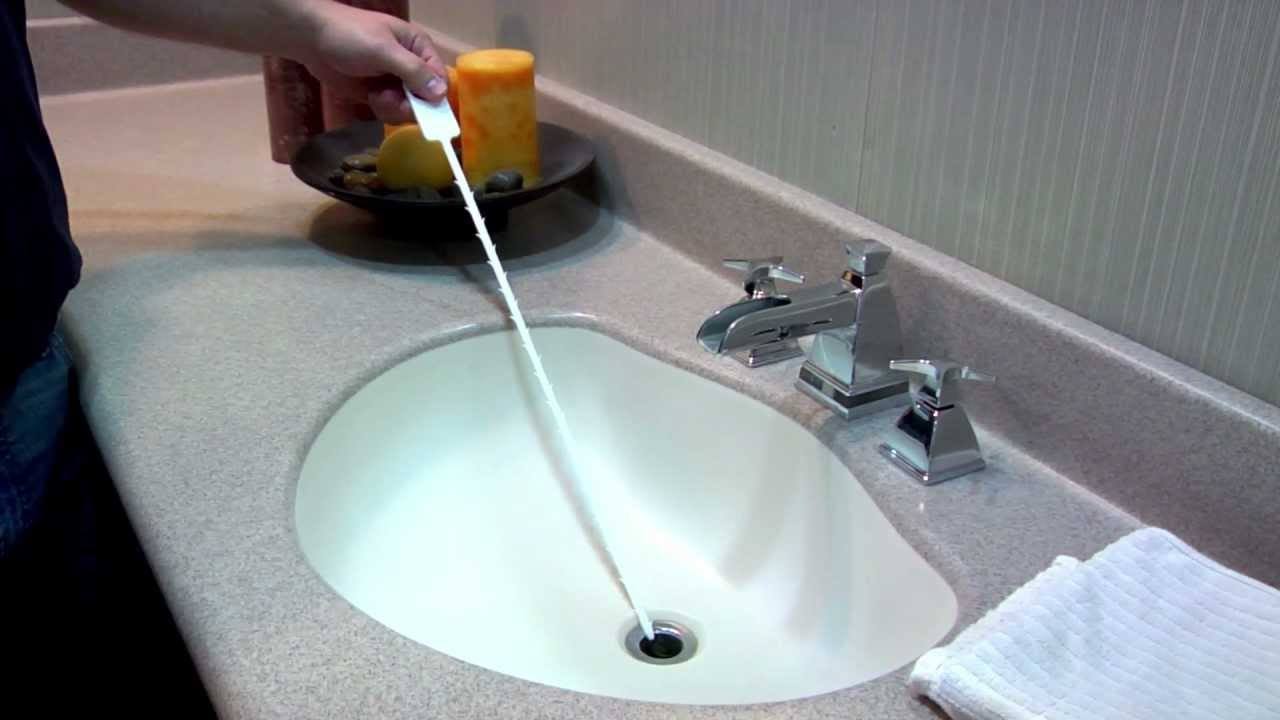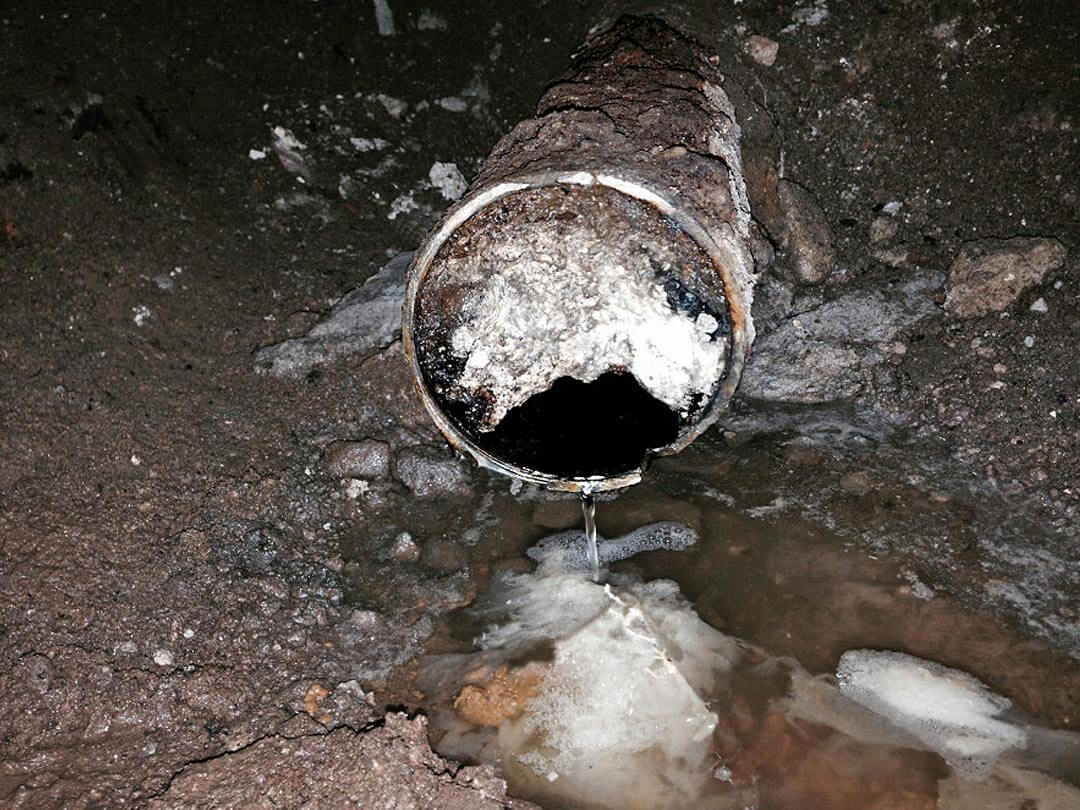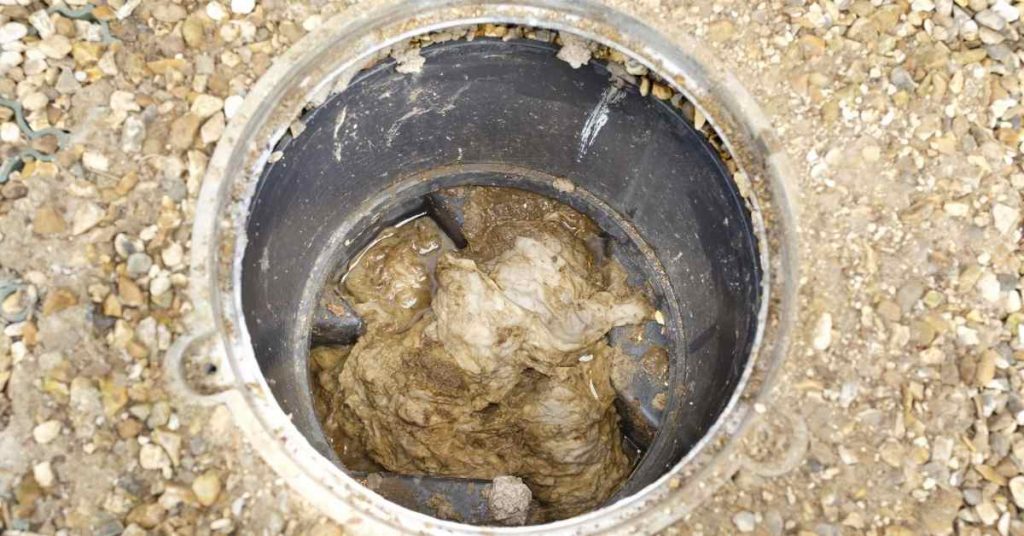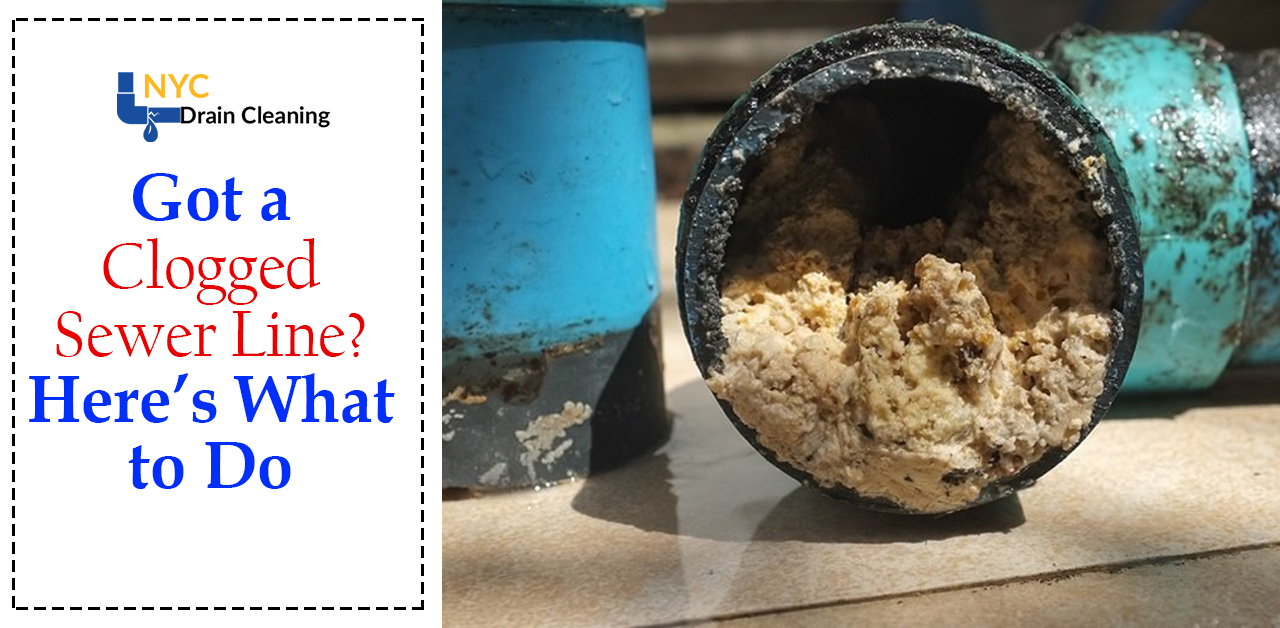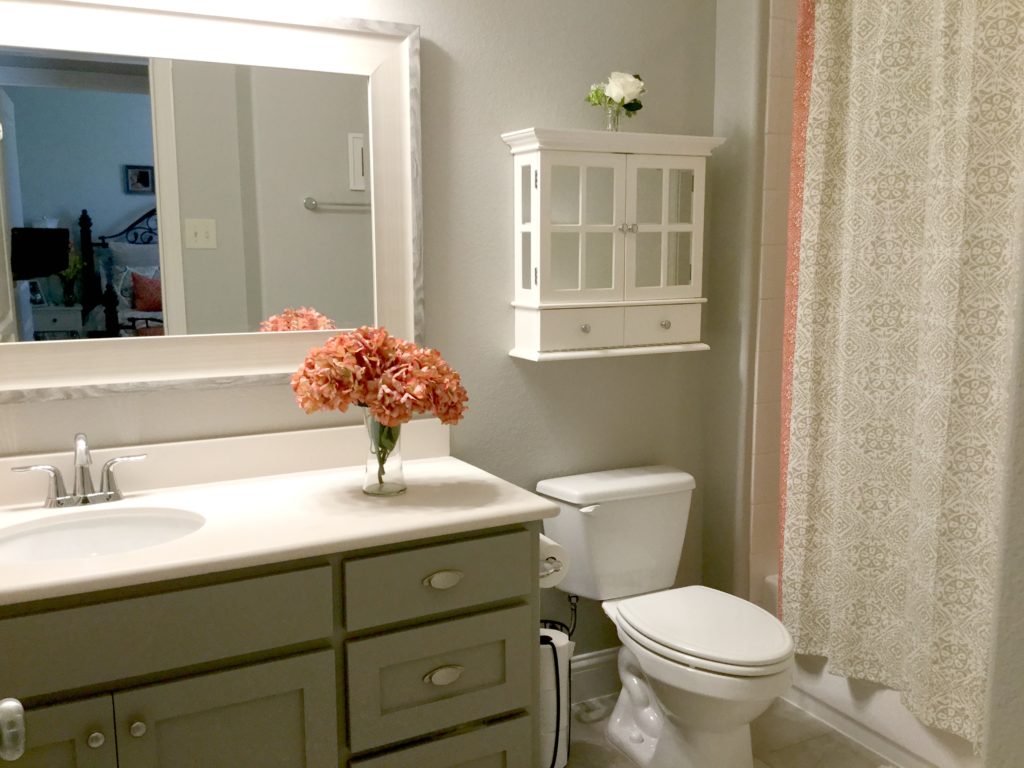If you've ever experienced a clogged kitchen sink line, you know how frustrating and inconvenient it can be. Not only does it prevent you from using your sink, but it can also lead to unpleasant odors and even leaks if left untreated. But fear not, unclogging a kitchen sink line is easier than you may think. Follow these six simple steps and you'll have your sink back to normal in no time. Step 1: Identify the Source of the Clog The first step to unclogging your kitchen sink line is to determine where the clog is located. Is it in the sink drain or further down the line? One way to tell is by checking if the water is draining slowly or not at all. If it's just the sink drain, then the clog is likely near the surface. If the water is backing up in other drains, then the clog is likely in the mainline. Step 2: Try a Plunger If the clog is in the sink drain, a plunger may do the trick. Make sure to cover the overflow hole with a rag or tape to create a seal. Then, place the plunger over the drain and pump up and down several times. This creates suction and can dislodge the clog. Step 3: Use a Drain Snake If the plunger doesn't work, it's time to bring in the drain snake. This tool is designed to break up and remove clogs in pipes. Insert the snake into the drain and turn the crank to push it further down the pipe. Keep turning until you feel resistance, then continue turning to break up the clog. Finally, pull the snake out and run hot water down the drain to flush out any remaining debris. Step 4: Try a Chemical Drain Cleaner If the plunger and drain snake don't work, you can try a chemical drain cleaner. Be sure to follow the instructions carefully and use gloves and eye protection. These cleaners can be effective at breaking up clogs, but they can also be harsh on your pipes and the environment, so use them sparingly. Step 5: Call a Professional If all else fails, it's time to call in the professionals. They have the tools and expertise to quickly and effectively clear a clogged kitchen sink line. They can also inspect the pipes to ensure there are no other underlying issues causing the clog. Step 6: Prevent Future Clogs Once your kitchen sink line is unclogged, it's important to prevent future clogs. Avoid pouring grease, oil, and food scraps down the drain. Install a drain cover to catch hair and other debris. And consider scheduling regular maintenance for your pipes to prevent buildup and catch potential clogs before they become a major problem.1. How to Unclog a Kitchen Sink Line in 6 Easy Steps
Sewer line clogs can be a major headache for homeowners. They can lead to backups, slow drainage, and even sewage leaks. To prevent these issues, it's important to understand the common causes of sewer line clogs and take steps to prevent them. Tree Roots One of the most common causes of sewer line clogs is tree roots. As trees grow, their roots can extend into sewer lines, causing blockages and even damaging the pipes. To prevent this, it's important to be mindful of where you plant trees and regularly have your sewer lines inspected and maintained. Grease and Fat Buildup Grease and fat may seem harmless when they're hot and liquid, but they can quickly solidify and cause major clogs in your sewer line. Avoid pouring grease and fat down the drain and instead dispose of it in the trash. Foreign Objects Items like paper towels, feminine hygiene products, and baby wipes should never be flushed down the toilet. These items can easily get stuck in your sewer line and cause clogs. Make sure to dispose of them in the trash instead. Age of Pipes As pipes age, they can become corroded, cracked, or collapsed, making it easier for debris to get stuck and cause clogs. If you live in an older home, it's important to have your sewer lines regularly inspected and replaced if needed. Preventative Measures In addition to being mindful of what goes down your drains, there are a few preventative measures you can take to avoid sewer line clogs. Install drain covers to catch hair and other debris, avoid using chemical drain cleaners, and schedule regular maintenance for your pipes.2. Common Causes of Sewer Line Clogs and How to Prevent Them
A clogged main sewer line is not something to be taken lightly. It can lead to major plumbing issues and costly repairs if left untreated. Here are five signs that your main sewer line may be clogged and in need of attention. Multiple Clogged Drains If you notice that multiple drains in your home are clogged at the same time, it's a good indication that the clog is in your main sewer line. This could include your toilets, sinks, and showers. It's important to address this issue as soon as possible to prevent further damage. Water Backing Up When your main sewer line is clogged, water has nowhere to go and will often back up into your drains. This could be in the form of water pooling in your shower or toilet, or even coming out of your sink drain. If you notice this happening, it's a definite sign of a clogged sewer line. Unpleasant Odors A clogged sewer line can lead to unpleasant odors in your home. This is caused by the buildup of waste and debris in the pipes. If you notice a foul smell coming from your drains, it could be a sign that your main sewer line is clogged. Strange Noises If you hear gurgling or bubbling sounds coming from your drains, it could be a sign of a clogged main sewer line. This occurs when air is trapped in the pipes due to the blockage. If left untreated, it can lead to more serious issues and even damage to your pipes. Damp Spots in Yard If you have a clogged main sewer line, the water and waste may have nowhere to go and could start to seep into your yard. If you notice any damp or soggy spots in your yard, it's important to have your sewer line inspected as soon as possible.3. 5 Signs Your Main Sewer Line is Clogged
A clogged sewer line can be a major headache for homeowners. It can lead to backups, slow drainage, and even sewage leaks. While it's always best to call a professional for severe clogs, there are some DIY methods you can try for minor clogs. Use a Plunger If you suspect the clog is near the surface, you can try using a plunger to dislodge it. Make sure to create a seal by covering the overflow hole and then pump the plunger up and down several times. This can create suction and break up the clog. Try a Drain Snake If the plunger doesn't work, you can try using a drain snake to break up the clog. Insert the snake into the drain and turn the crank to push it further down the pipe. Keep turning until you feel resistance, then continue turning to break up the clog. Finally, pull the snake out and run hot water down the drain. Use a Homemade Solution Another DIY method for clearing a clogged sewer line is to use a homemade solution of baking soda and vinegar. Pour one cup of baking soda down the drain, followed by one cup of vinegar. Let it sit for a few minutes, then pour hot water down the drain to flush out any debris. Boiling Water If the clog is caused by grease or fat buildup, pouring boiling water down the drain can help break it up and clear the clog. Be careful not to use this method on older pipes, as the hot water can cause them to crack or corrode. Chemical Drain Cleaners If all else fails, you can try using a chemical drain cleaner. However, these should be used sparingly as they can be harsh on your pipes and the environment. Be sure to follow the instructions carefully and use gloves and eye protection.4. DIY Methods for Clearing a Clogged Sewer Line
When it comes to your home's plumbing, prevention is key. This is especially true when it comes to your sewer line. Regular maintenance can help prevent clogs, backups, and costly repairs down the road. Prevent Clogs Regular maintenance can help prevent clogs in your sewer line. During a maintenance visit, a professional can inspect the pipes and catch any potential issues before they become a major problem. They can also clear out any buildup or debris to ensure the pipes are flowing freely. Extend the Lifespan of Your Pipes Just like any other system in your home, your sewer line needs regular maintenance to ensure it's functioning properly. By taking care of your pipes, you can extend their lifespan and avoid having to replace them prematurely. Catch Issues Early During a maintenance visit, a professional can spot any potential issues with your sewer line and address them before they become a major problem. This can save you time, money, and prevent any major disruptions to your daily life. Prevent Costly Repairs By catching issues early and preventing clogs, regular maintenance can help you avoid costly repairs down the road. This can also save you from having to deal with major plumbing emergencies that can occur if a clogged sewer line goes untreated for too long. Peace of Mind Regular maintenance can give you peace of mind knowing that your sewer line is in good working condition. You won't have to worry about unexpected clogs or backups and can rest easy knowing your pipes are being taken care of.5. The Importance of Regular Sewer Line Maintenance
Kitchen sink line clogs can be a major inconvenience and can disrupt your daily routine. If you suspect your kitchen sink line may be clogged, here are a few ways to tell for sure. Slow Drainage If your kitchen sink is draining slower than usual, it could be a sign of a clogged sink line. This is especially true if the water takes a long time to drain even after you've stopped using the sink. Unpleasant Odors A clogged sink line can lead to unpleasant odors in your kitchen. This is caused by food scraps and debris getting stuck in the pipes and beginning to decompose. If you notice a foul smell coming from your sink, it's a good indication of a clogged sink line. Water Backing Up If you notice water backing up in your sink or even coming out of the drain, it's a definite sign of a clogged sink line. This occurs when the water has nowhere to go due to the blockage in the pipes. Gurgling Sounds If you hear gurgling or bubbling sounds coming from your sink drain, it could be a sign of a clogged sink line. This occurs when air is trapped in the pipes due to the blockage. If left untreated, it can lead to more serious issues and even damage to your pipes. Multiple Clogged Drains If you have multiple drains in your kitchen that are clogged at the same time, it's likely that the clog is in your sink line. This could include your sink, dishwasher, or garbage disposal. If you notice this happening, it's important to address the issue as soon as possible.6. How to Tell if Your Kitchen Sink Line is Clogged
A clogged sewer line is not something to be ignored. It can lead to major plumbing issues and costly repairs if left untreated. Here are some of the dangers of ignoring a clogged sewer line. Backups One of the main dangers of ignoring a clogged sewer line is the potential for backups. This can lead to water and sewage coming up through your drains, toilets, and sinks. Not only is this unpleasant, but it can also be a health hazard. Structural Damage If a clogged sewer line goes untreated for too long, it can lead to structural damage to your home. The water and sewage have nowhere to go and can start to seep into your walls, foundation, and other areas of your home. This can cause major damage and be costly to repair. Health Hazards7. The Dangers of Ignoring a Clogged Sewer Line
Understanding the Causes of Kitchen Sink Line Clogs in Sewer Pipes
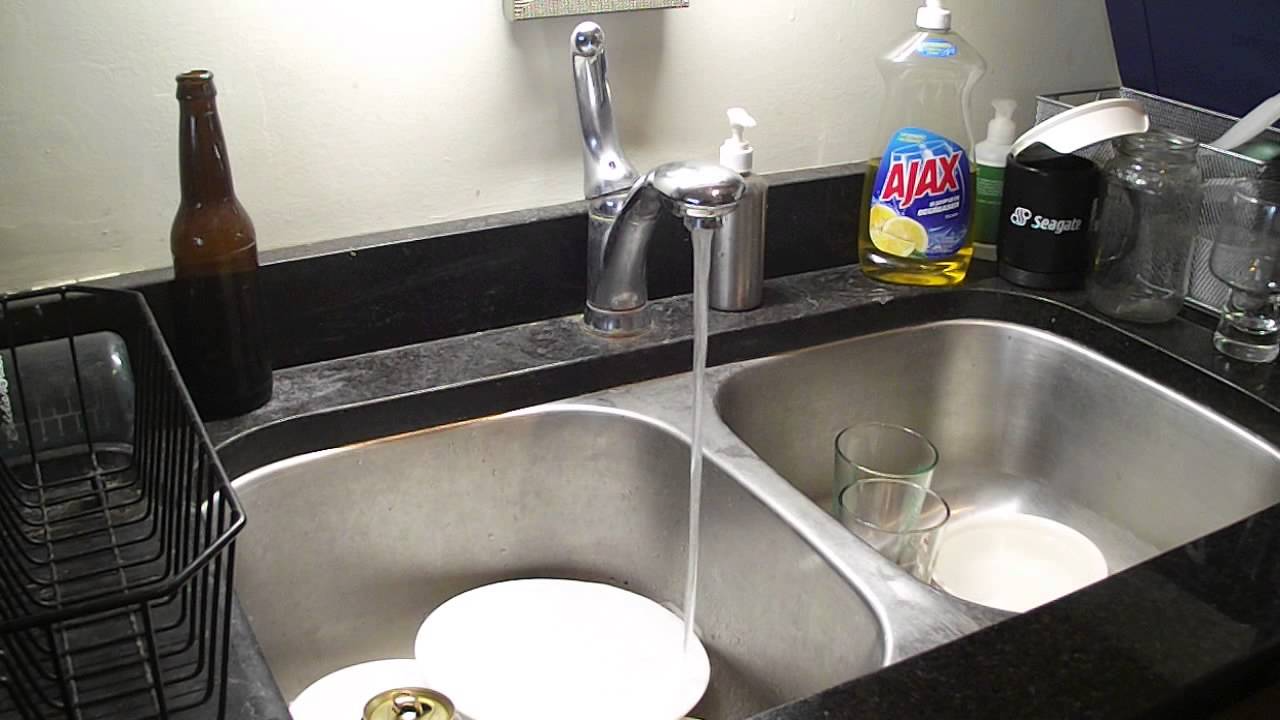
The Importance of Proper Plumbing in House Design
 When designing a house, proper plumbing is often overlooked or not given enough attention. However, a well-designed plumbing system is crucial for the overall functionality and maintenance of a home. One common issue that homeowners face is kitchen sink line clogs in sewer pipes, which can cause major disruptions and inconvenience. In this article, we will delve into the main causes of these clogs and how they can be prevented.
When designing a house, proper plumbing is often overlooked or not given enough attention. However, a well-designed plumbing system is crucial for the overall functionality and maintenance of a home. One common issue that homeowners face is kitchen sink line clogs in sewer pipes, which can cause major disruptions and inconvenience. In this article, we will delve into the main causes of these clogs and how they can be prevented.
The Main Culprits of Kitchen Sink Line Clogs
 Kitchen waste and debris
, such as food scraps, grease, and oils, are the main culprits of clogged kitchen sink lines. These substances can easily accumulate and solidify in the pipes, causing blockages and hindering the flow of water. Over time, the buildup can become so severe that it completely blocks the pipe, leading to backups and potential damage to the plumbing system.
Improper installation and maintenance
of plumbing systems can also contribute to kitchen sink line clogs. If pipes are not properly secured or there are leaks, it can create an environment for debris to collect and cause clogs. Additionally, not regularly cleaning and maintaining the pipes can also lead to buildup and blockages.
Kitchen waste and debris
, such as food scraps, grease, and oils, are the main culprits of clogged kitchen sink lines. These substances can easily accumulate and solidify in the pipes, causing blockages and hindering the flow of water. Over time, the buildup can become so severe that it completely blocks the pipe, leading to backups and potential damage to the plumbing system.
Improper installation and maintenance
of plumbing systems can also contribute to kitchen sink line clogs. If pipes are not properly secured or there are leaks, it can create an environment for debris to collect and cause clogs. Additionally, not regularly cleaning and maintaining the pipes can also lead to buildup and blockages.
Preventive Measures
 To avoid kitchen sink line clogs in sewer pipes, there are several preventive measures that homeowners can take.
Proper disposal of kitchen waste
is key, as avoiding putting food scraps, grease, and oils down the drain can significantly reduce the risk of clogs. Using a sink strainer can also help catch larger debris before it goes down the drain.
Regular maintenance
of the plumbing system is crucial in preventing clogs and other plumbing issues. This includes periodically cleaning the pipes with hot water and baking soda or using a natural enzyme-based drain cleaner. It is also important to address any leaks or faulty pipes as soon as they are noticed to prevent further damage.
To avoid kitchen sink line clogs in sewer pipes, there are several preventive measures that homeowners can take.
Proper disposal of kitchen waste
is key, as avoiding putting food scraps, grease, and oils down the drain can significantly reduce the risk of clogs. Using a sink strainer can also help catch larger debris before it goes down the drain.
Regular maintenance
of the plumbing system is crucial in preventing clogs and other plumbing issues. This includes periodically cleaning the pipes with hot water and baking soda or using a natural enzyme-based drain cleaner. It is also important to address any leaks or faulty pipes as soon as they are noticed to prevent further damage.
In Conclusion
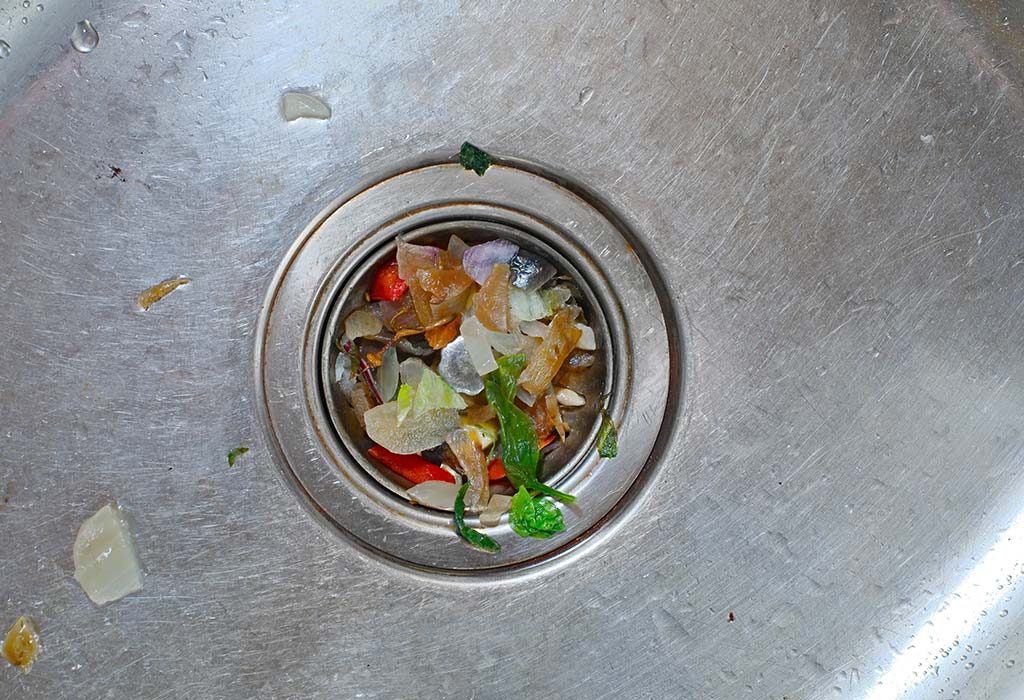 As we can see, kitchen sink line clogs in sewer pipes can be caused by a variety of factors, but they can be prevented with proper care and maintenance. By being mindful of what goes down the drain and regularly maintaining the plumbing system, homeowners can avoid the inconvenience and potential damage that clogs can cause. When designing a house, it is important to give proper attention to the plumbing system to ensure its functionality and longevity.
As we can see, kitchen sink line clogs in sewer pipes can be caused by a variety of factors, but they can be prevented with proper care and maintenance. By being mindful of what goes down the drain and regularly maintaining the plumbing system, homeowners can avoid the inconvenience and potential damage that clogs can cause. When designing a house, it is important to give proper attention to the plumbing system to ensure its functionality and longevity.


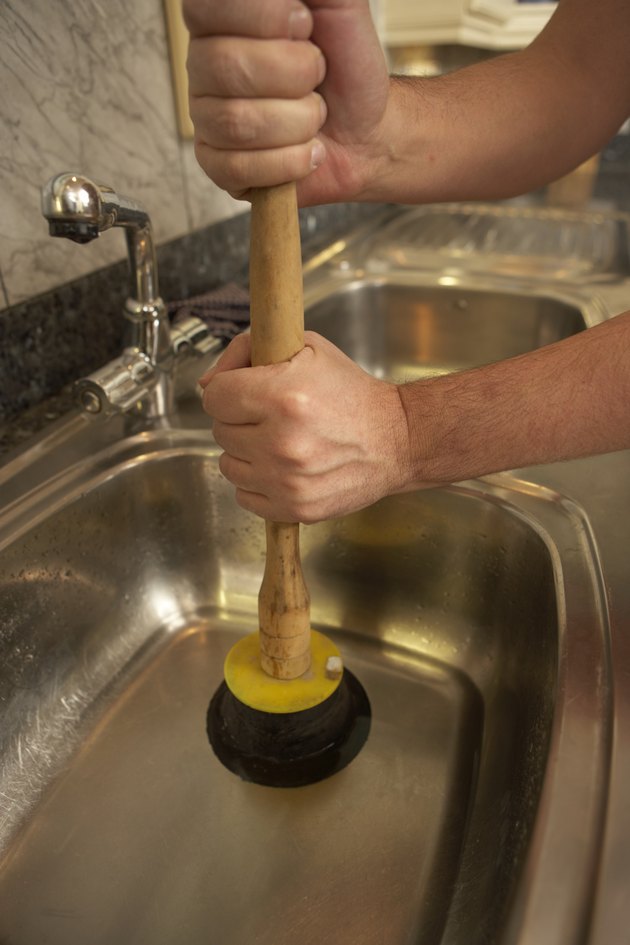


:max_bytes(150000):strip_icc()/how-to-unclog-a-kitchen-sink-2718799_sketch_FINAL-8c5caa805a69493ab22dfb537c72a1b7.png)




